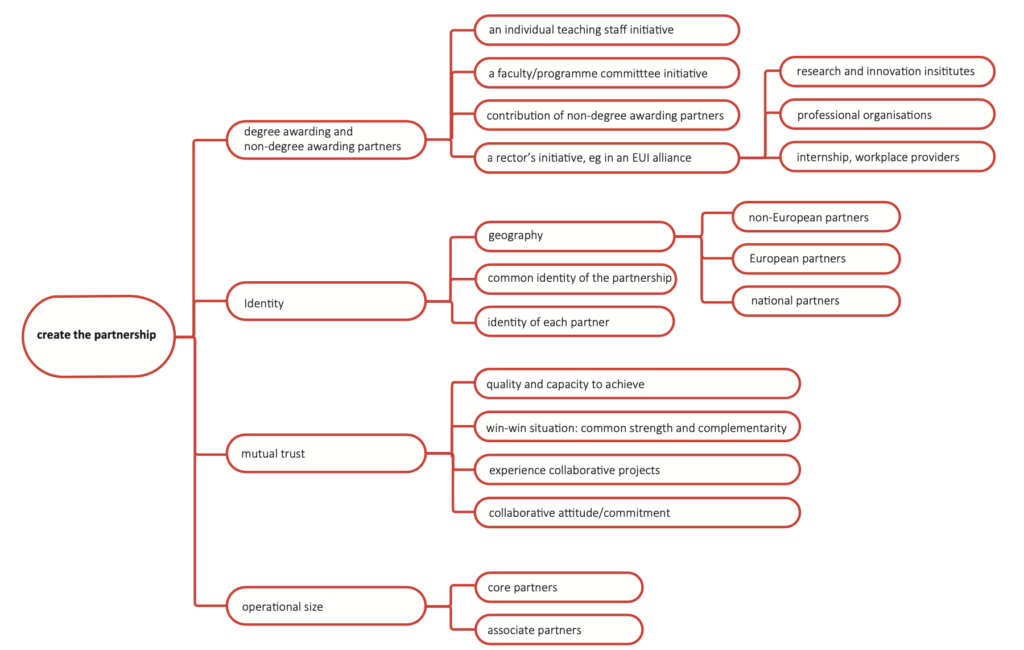
| The creation of the partnership for the joint master’s program is based on several criteria: |
| • The participation of degree awarding and non-degree awarding partners; |
| • The identity of the partnership to be developed; |
| • Mutual trust; |
| • Operational size. |
Guidelines
Degree awarding and non-degree awarding partners
• The initiative for a joint master’s programme can be taken by an individual member of staff, by a programme committee at faculty level, or by a rector or vice rector at institutional level. In practice, initiatives arise on the basis of previous collaboration or within the framework of a European University Alliance (EUI) or other network;
• Non-degree awarding partners can contribute to the joint master’s by strengthening the research, innovation and professional base. Examples are research and innovation institutes, professional organisations and workplace providers that offer internships.
Identity
• The identity of a partnership is largely geographically determined by its national, European or international base. Together, partners find a common identity in a combined research and innovation orientation or collaboration. Throughout this common identity, partners also want to maintain their own profile.
Trust
• Mutual trust is a basic condition for the realization of a successful joint master’s. This is based on the educational, organizational and technological capacity of each partner institution to fulfill its role. The joint master’s must also create benefits for each individual partner, creating win-win situations through complementarity and multiplying effects.
• Partners show a collaborative attitude and a long-term commitment to the joint master’s programme (minimum 5 years).
Operational size
• As setting up a joint master’s programme is a complex activity, the typical number of partners will range from two to six partners. A higher number will be complicated, because more perspectives may need to be reconciled and more institutional and national regulations need to be taken into account;
• In case more partners participate, core partners can take the lead, while associate partners play a specific role, eg additional labs, specific seminars, mobility programmes, guest lectures, etc.
• Associated partners can be institutions that do not award a degree, such as museums, national scientific institutions, professional organizations, industry sectors or companies.
Observations
• Individual teaching staff will start with the development of a joint master’s because of different motivations related research and innovation in a certain scientific and professional domain. Due to their reputation, they can also be invited by colleagues from other universities or networks.
They need a dialogue and an agreement with the faculty or the institutions at an early stage in order to comply with the institutional rules for programming joint programmes . From the outset, they should receive advice and support from various services in the university, especially teaching and learning, IT, the international office, the student administration and legal services;
next chapter: Compose the programme team: structure and tasks
previous chapter: Connect with institutional policies and strategies
back to overview: Models and guidelines for the design and development of joint master’s programmes
